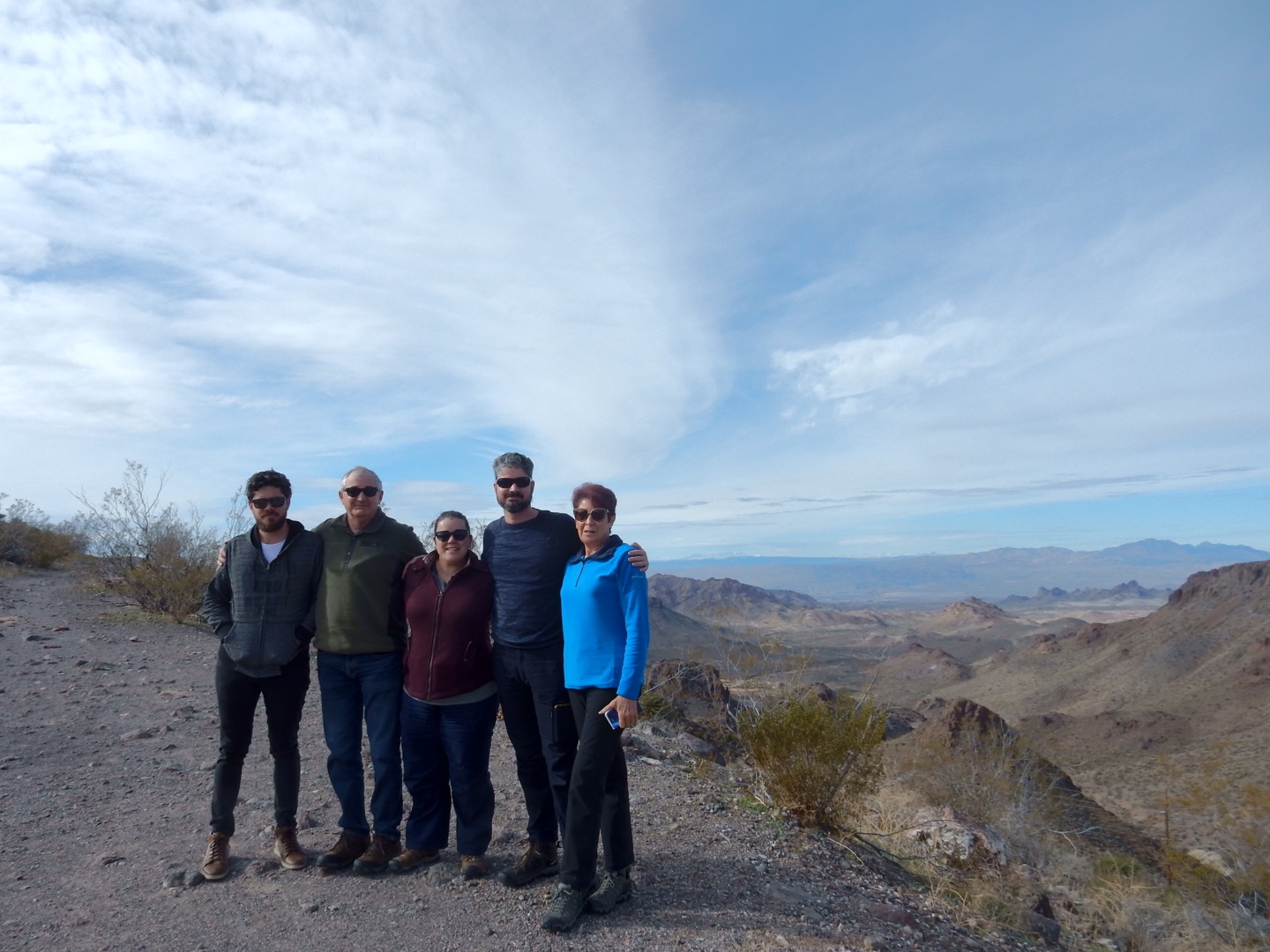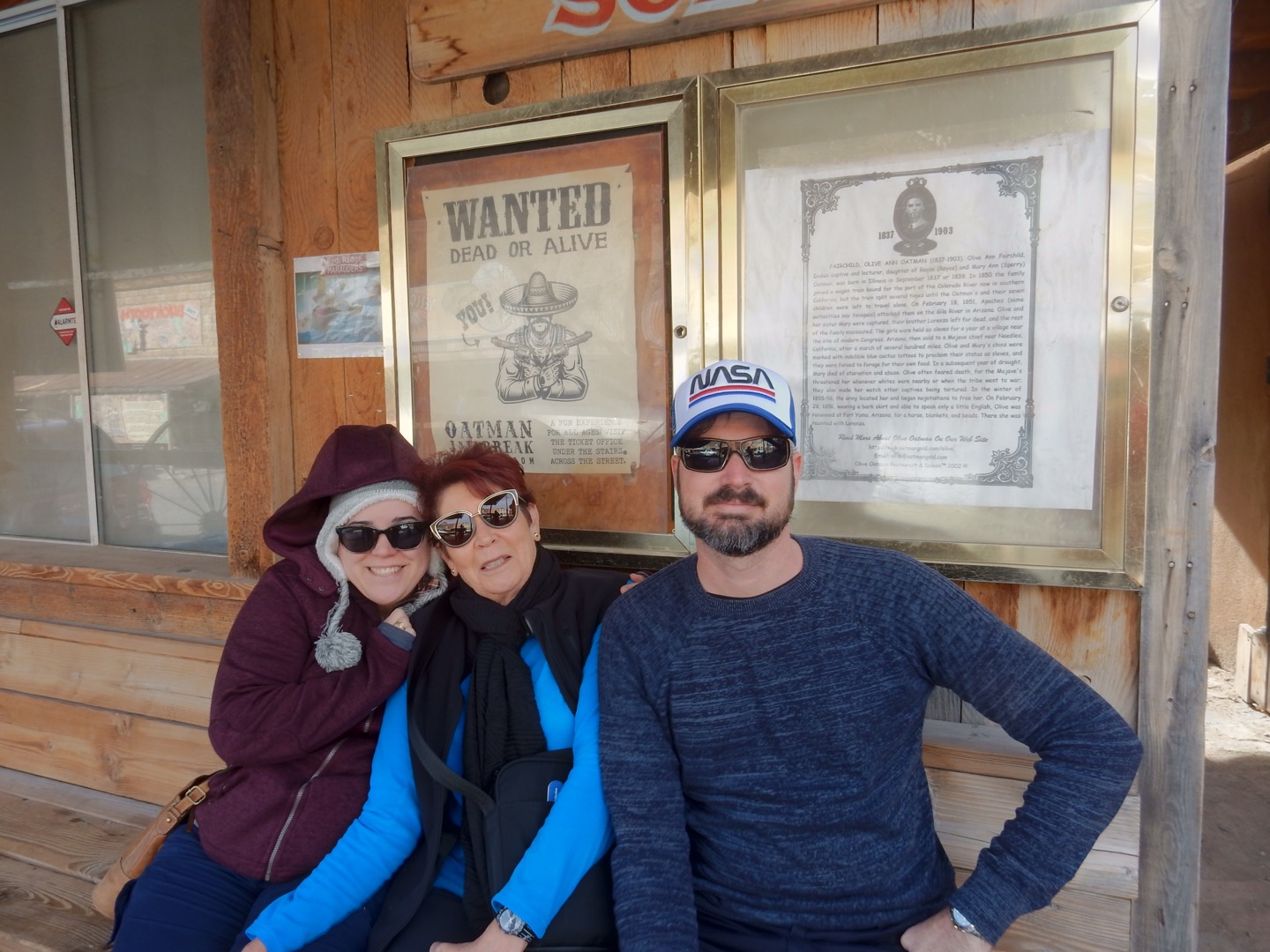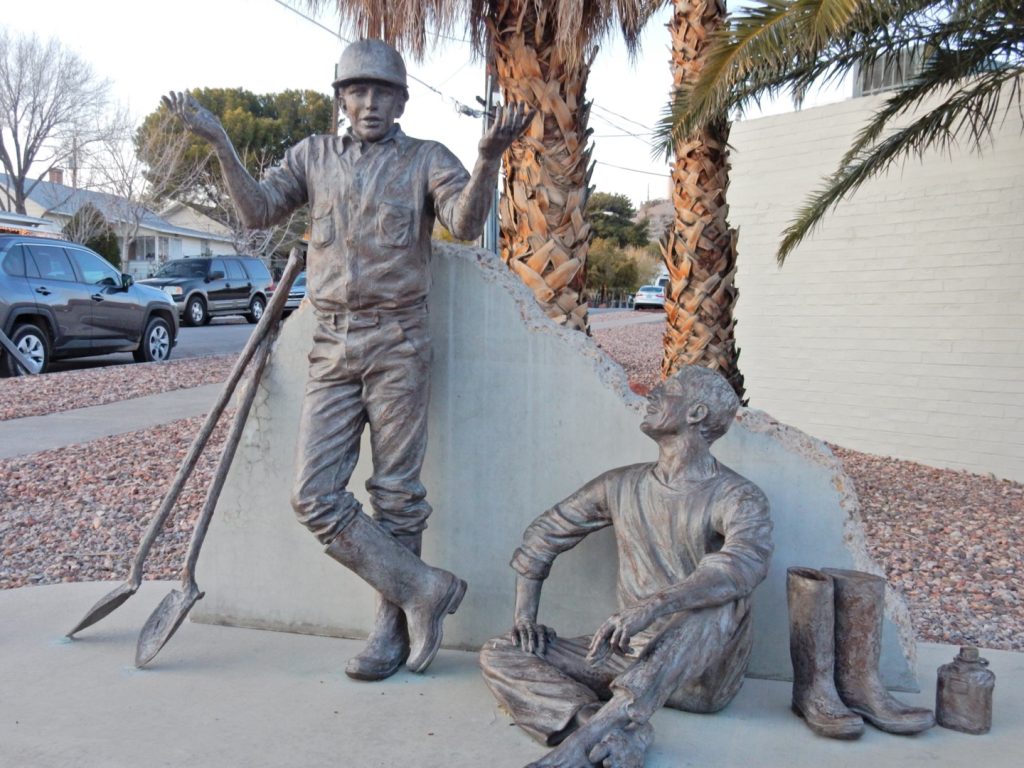Monday 30th December 2019
We took one last look at the Canyon this morning before driving south to Boulder City via Oatman. Now Oatman is a place best described as the Wild West. It comes complete with wooden sidewalks and burros (donkeys) roaming the streets. It is on the original Route 66, although these days it has been bypassed by the Interstate. The drive into Oatman is very narrow with lots of hairpin turns – great for motorbikes, not so easy in a big Dodge Charger.








From Oatman we drove onto Boulder City – the city that built Hoover Dam. Today the hustle and bustle of a construction town is long gone but the locals have worked hard to pay tribute to the pioneers with lots of great bronze sculptures on display throughout the main streets. One of the plaques in the town square paid tribute to Frank Crowe, Chief Engineer for the Hoover Dam project – who is quoted as saying ‘We had 5000 men in a 4000 ft canyon. The problem was to set up the right sequence of jobs so they wouldn’t kill each other off’



Those that came to Boulder City to work on the dam lived in harsh conditions. The oppressive heat of the summers and the unbearable cold of the winters took its toll on many. Even the most mundane chores were difficult in this inhospitable environment. Because Boulder City was not yet born as a town, there was no housing. Workers and their families lived in tents – an area later referred to as Rag Town.

At the height of Hoover Dam construction, more than 7000 men laboured in Black Canyon. Some jobs were glamorous and exciting, such as the high scalers who swung over the canyon on ropes or the cableway operators who kept concrete buckets moving 24 hours a day, 7 days a week. Other jobs were more mundane, but no less important: there were muckers, who shoveled mud out of the tunnels, truck drivers who hauled rock up and down the river or, like the Alabam who swept the outhouses and kept them well supplied with paper.

Legend has it there are many workers buried in Hoover Dam. However, due to the manner in which the Dam was constructed, this would have been impossible. ‘Puddlers’ directed buckets of concrete over empty forms, released the concrete and then used their shovels and feet to spread it around. In the process, they made sure there were no air bubbles or debris that would weaken the structure after it hardened. Move over, fresh concrete was added 8 cubic yards at a time, increasing the depth by only two to three inches at a time and was never deep enough to submerge a person. While many laborers lost their lives building the Dam, none were ever buried within.





